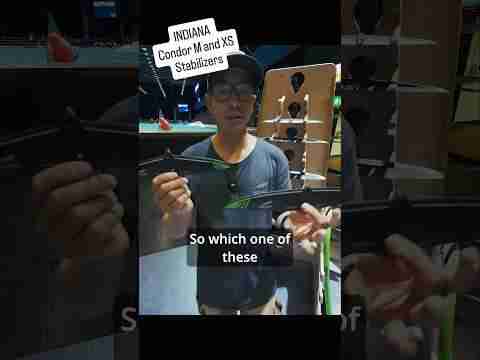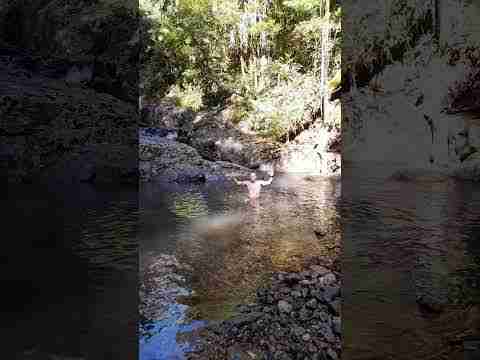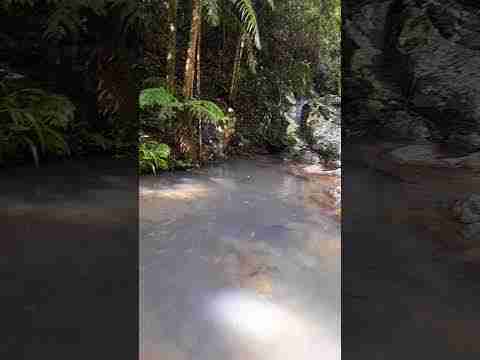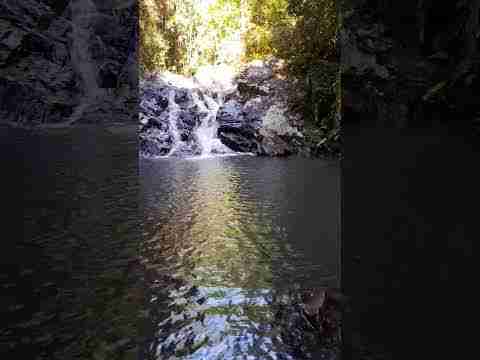[please login to make this ad block disappear]
Interview: Jackie Dillon
 Interview with Jackie Dillon, President of the World Waveski Surfing Association.
Interview with Jackie Dillon, President of the World Waveski Surfing Association.
 This interview was originally produced for the Portuguese Playak partner site 'kayaksurf.net'. This interview was originally produced for the Portuguese Playak partner site 'kayaksurf.net'. |
 Name: Jackie Dillon.
Name: Jackie Dillon.
Age: 53.
Occupation: Director of Nursing/Aged Care Proprietor/Semi-full time waveski surfer, Board Member of CINI Australia, (Child in Need India).
Address: Cottesloe Western Australia.
Competition records: Twice runner-up in World Waveski Surfing Titles 1999 and 2001, 4 times Australian Women's Waveski Surfing Titles, 15 times Western Australia Women's Waveski Surfing Titles 1996-210, First place Series one AWWP 2008 tour to Reunion Island
Paddling experience: paddling since age 19 – 1976, prior to this stand up surfer since the age of 5 years.
Sponsors: Mainpeak Water Sports, Gath helmets, Go Fast Waveskis, Blades paddles.
Gear: Go Fast Waveskis – simply the best in the business, Blades paddles, and Gath Helmets
Personal Website: jedillonandassociates.com.au (under construction).
Hello Jackie! Tell us... how did you started to surf waveskis?
I suffered a horrendous knee injury in 1976 and as part of my rehab jumped on a waveski and found that I actually enjoyed it. They were the days when skis had one massive centre fin, plastic foot straps, without seat belts and seat pads and a piece of string connecting paddle to ski. I vividly recall many times when my feet would get caught in the foot straps after my ski twisted on itself.

Did you ever surfed in Portugal?
No I haven’t surfed in Portugal. Probably the closest to Portugal that I have surfed would be Bakio 2001 World Waveski Surfing Titles.
And kayaks... did you ever tried to surf with a surf kayak?
I have sat in a kayak and got totally paranoid that I was going to be trapped if I tipped over – perhaps some of my minders in Portugal might tempt me to have another go. Surf Kayaking has taken off here in Perth with many of the kayakers coming from a canoeing background, so I might be in with a chance.
Your started competing in 1996. Do you still compete?
I still compete, although I have been a little selective on where I go. I hate the cold and tend to gravitate to competitions that have warmer conditions. One competition that is a ‘don’t miss’ on my calendar is the New Zealand World Invitational held every year at Easter time in Gisborne on New Zealand’s East coast.
The State Rounds in Western Australia are fantastic competitions and something I look forward to each year in particular surfing with my mates (The Three Amigos – Richie Croome, Eric Tocock and Rob Borg) nothing like a good old Barbie and a cold one at the end of a day’s competition.
Naturally, I’m looking forward to the World Waveski Surfing Titles in Portugal. It’s amazing how my whole year’s working calendar is driven by this one event! I am taking this event a little more seriously and have engaged a coach – Steve Foreman (former coach of Layne Beachley 7 times World surfing champion). Nothing like a second wind albeit in my 50’s.
When was the WWSA founded and what are the main objectives?
Going back through the archives and I stand to be corrected here I have been able to fathom out that the WWSA was founded sometime around 1986. I have minutes from WWSA meetings since 1998 as this was my first real foray on the scene of the World waveski surfing championships. Fundamentally the main objectives of the WWSA is to encourage the development of waveski surfers World wide as well as to foster International relations by way of competitions.
Does the WWSA maintain any communications with World Surf Kayak Association?
There has been very little dialogue this year but I would imagine that as we get ready for the 2011 WWSA Titles in Santa Cruz there will be much to chat about particularly as this event forms part of the prestigious Surf Kayak Festival. From what I’ve heard the World Surf Kayak Association has a lot of friendly ‘dudes’ so we share kindred spirits. I know very little about the rules for surf kayaking as waveski rules have been adapted from the International surfing Association (ISA). Perhaps at World’s 2011 both disciplines i.e. waveskis and kayaks can discuss in greater depth rules, events etc.
The WWSA signed a cooperation agreement with the ICF. What’s the deal?
This agreement while signed in 2010 came about from discussions over many years as early as 1995. It wasn’t until 1999 at the World Titles in Brazil that pressure was put on the WWSA to forge links with the ICF. as both Brazil and France’s funding came from their respective canoe federations. At that time the suggestion to join the ICF was not well received due to major countries i.e. Australia, South Africa and the US aligning themselves with surfing. There was also this notion that if the WWSA joined the ICF, waveski surfers would have to wear life jackets and helmets. As a result of this decision not to join the ICF in 1999, Brazil did not become the great waveski nation that it could have been. It became apparent over the next 10 years that unless the WWSA changed its approach with marketing and exposure there was every chance that waveski surfing would literally snuff itself out. Hence the need to explore options and the timely move by South Africa in 2006 to open dialogue with the ICF.

What are the plans?
Our plans for the future of the WWSA with the ICF is very encouraging and the enthusiasm displayed by both organizations is positive. I am hoping that the lead up to World’s 2011 we can entertain some very positive dialogue between ourselves. There has been optimism with WWSA since our discussions with Simon Toulson from the ICF and one can only build on this foundation. The growth and development of our sport will be largely underpinned by each nation continuing to put in the time and effort to invest in the grass roots of waveski surfing; no mean feat given that our sport is driven by a small group of volunteers. Our agreement with the ICF enables us to maintain our rules albeit some modifications if required.
kayaksurf.net was founded in 2002 and never made any distinction between a surf kayak or a waveski - the most important is to have fun!
I can only speak from a waveski perspective as my knowledge of surf kayaks is practically zero. Waveski surfing is all about testing one’s limits on a wave and surfing in the zone (whatever that might be). I had the privilege of surfing with Steve Farthing (Masters Kayak champion) a couple of months ago and I thought he looked pretty spectacular given that the waves were not that spectacular. Having said that I think that waveski surfing is more exhilarating and perhaps mirrors stand up surfing more so. Anyone who is prepared to get out in the surf and have the best time of their lives regardless of what craft they are riding deserves as much respect from each other.
In Portugal (like in Argentina, Galicia and Brazil, for example), the national circuits include kayaksurf and waveski together (the competitor can compete in both categories in the same event). How do you see this kind of event with both crafts in the same competition?
I think it is very exciting to see both waveskis and surf kayaks competing at the one competition as the exposure would be great. As we have seen with Louis Albando, Darren Bason and Steve Farthing and others who have crossed the line between the two, the benefits have been very positive. Having said that – these craft need to be surfed in separate divisions.

Looking forward to the World Waveski Surfing Titles in Portugal?
Very exciting – I have been following the kayak surf festival in Portugal for a couple of years now and from all accounts it is a ‘don’t miss’ on the European calendar. It will be interesting to see how many people make the effort to attend and one would hope that this will be the start of a new era in particular with the WWSA having joined the ICF. Logistics could be a bit tricky given the number of potential competitors and the 6 days set aside for competition. No doubt we should be training to surf in all conditions. I have already booked my ticket and accommodation staying at the Santa Cruz Hotel.
What will the competitions be like?
Given that the WWSA title is now every two years we have made some changes with regards to seeding criteria and now only use the immediate past WWSA title result along with a competitor’s national and provincial result if required. The intent of this is to preserve the integrity of the WWSA event and ensure that competitors who make the effort to attend their results are carried over to the next WWSA event.
There has been much debate over the years about selection criteria etc for the WWSA titles. While the WWSA would like to see a streamlined approach with a proper selection process we have had to entrust each country to mandate its representation criteria.
Fundamentally the competition has separate divisions (women, cadets, juniors, new age, seniors, masters, grand masters and veterans) and the blue ribbon event - The Open. All the divisions are first round repo charge only with the exception of the women’s division which is a winners/losers format (this was changed following the 2009 WWSA titles). Naturally I would dearly love to see the Tag Team for both the Open and Women’s with double points awarded for the Open where either a junior, woman or veteran is substituted for an Open rider (we shall see whether this transpires).
The Open division is split into two parts and it goes something like this:
Top 32 based on the 2009 WWSA results. The top 32 surf off against each other in 4 man heats with the winners (first and second) advancing to the next round. The losers from this heat (3rd and 4th) surf off against the final 16 who have progressed up from the qualifiers (maximum of 64 riders for the qualifying division). Riders continue to surf off until you get down to the final 16 who surf in man on man heats. My hope is that we can have a competition that is both exciting and progressive with all competitors, administrators and spectators takes something home with them.

What are your thoughts about the evolution of waveskiing?
Waveskis themselves haven’t changed a whole lot over the years. While there has been some modifications here and there, the design concept is still pretty much the same. What we do see now is a much more fluid surfing of the wave. Riders are rewarded for putting together a series of maneuvers in the critical part of the wave thereby executing some fast action surfing. Waveski surfing is an exhilarating sport and continually requires the promotion of it. The use of you tube and of course John Nowak from waveski.info and Xaver Walser’s films from sub-graviti are excellent mediums to promote our sport. I would like to see the ‘eye candy’ approach with some of our most appealing and radical waveski surfers taking top billing in our promotions.
Perhaps some of our up and coming riders could be taught interview skills and take their presentations to a whole new level. While I might sound out of left field – sponsors like to know that their sponsored riders can say more than a ‘grunt’ and ‘I am stoked with my result’ etc.
Any final remarks?
It has been an honor and a privilege to be involved in waveski surfing both as a competitor and an administrator of the sport for well over 15 years. My success both on and off the field can be largely attributed to facing my fears in challenging waves and being surrounded by my minders during the most testing of conditions. People such as Nigel Bryant and Travis Best come to mind when surfing at Iluka Beach in November 2006 in quite scary waves. Of course one cannot forget the colorful competitors in our sport without whom we wouldn’t have any rules – Neil Decker (one of the most gifted waveski surfers in the World).
The people behind the scenes of our great sport who work tirelessly to make the World a better place to live. Our World Waveski Surfing Association who seem to be there during any discussions and represent all of us with the end result being a united front.
Thanks a lot Jackie! See you in Portugal soon ;)
Text - Luis Pedro Abreu
Photos - Penny Bedford / peniorphotography.com

Login to post here















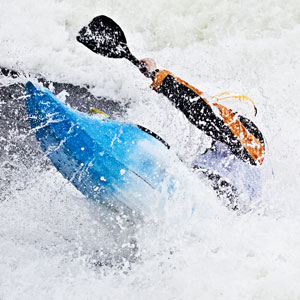 Get for free:
Get for free:

